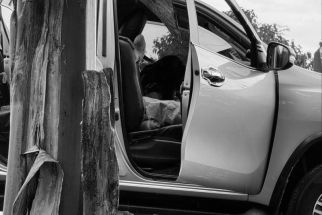Building a sea wall, strengthening a community
MANILA, Philippines - As a coastal community, Barangay Mangorocoro in Ajuy, Iloilo is no stranger to being affected by the elements. Barangay captain Conrado Fernandez says that it was once normal for their elementary school campus to be flooded during high tide, even in normal weather.
It was the constant fear of being flooded that pushed the residents of Barangay Mangorocoro to fight for the construction of a sea wall in 2010 when they were given the opportunity to address the most pressing needs of their community through Kapit-Bisig Laban sa Kahirapan-Comprehensive and Integrated Delivery of Social Services (Kalahi-CIDSS), one of the three main poverty alleviation programs of the Department of Social Welfare and Development.
It was this foresight that protected them from experiencing the full impact of Super Typhoon Yolanda.
“Kung wala po iyong Kalahi-CIDSS, madami na po ang patay dito dahil sa Yolanda (If it were not for Kalahi-CIDSS, a lot of the residents would have died because of Yolanda),†says Rogelio Labsan, the former captain of Barangay Mangorocoro, his tone as fearful as it is proud as he describes how the Kalahi sea wall was able to protect their community from the savagery of the typhoon.
Ajuy was one of the municipalities in Iloilo that was hit hard by the super typhoon, affecting 11,510 households, 7,064 of which totally lost their homes.
Ajuy Mayor Juancho Alvarez says that without the sea wall, Barangay Mangorocoro would have been washed out.
As it were, the thin crack on the sea wall serves as a silent testament of the ferocity of the super typhoon.
While the residents of Mangorocoro are thankful for the construction of the sea wall, what they are more grateful for is how Kalahi-CIDSS has ingrained in them the spirit of participation and cooperation within their village.
Kalahi-CIDSS seeks to develop the skills and capacities of the citizens as it strives to teach them to work together to become active agents in local development. The project builds up communities so citizens will be able to work together to lift themselves from poverty.
More importantly, they now understand that each one of them has a personal stake in helping their barangay develop. Teacher and volunteer Lorelyn Bigos says, “This is part of my legacy… Generations will benefit from this project.â€
Since the start of the partnership, 115 community sub-projects were constructed in the municipality. These include school buildings, day care centers, health stations, and water systems.
From being a fourth-class municipality in 2001, it has since been re-classified as a second-class municipality in 2009, the change of which is Mayor Alvarez attributes partly due to the interventions introduced by Kalahi-CIDSS.
When asked if Ajuy can stand even when Kalahi-CIDSS pulls out of the municipality, the residents are one in saying that they can, because they have already embraced the community-driven development strategy and will work doubly hard to ensure that they will continue following the processes instituted by the project.
- Latest
- Trending


















